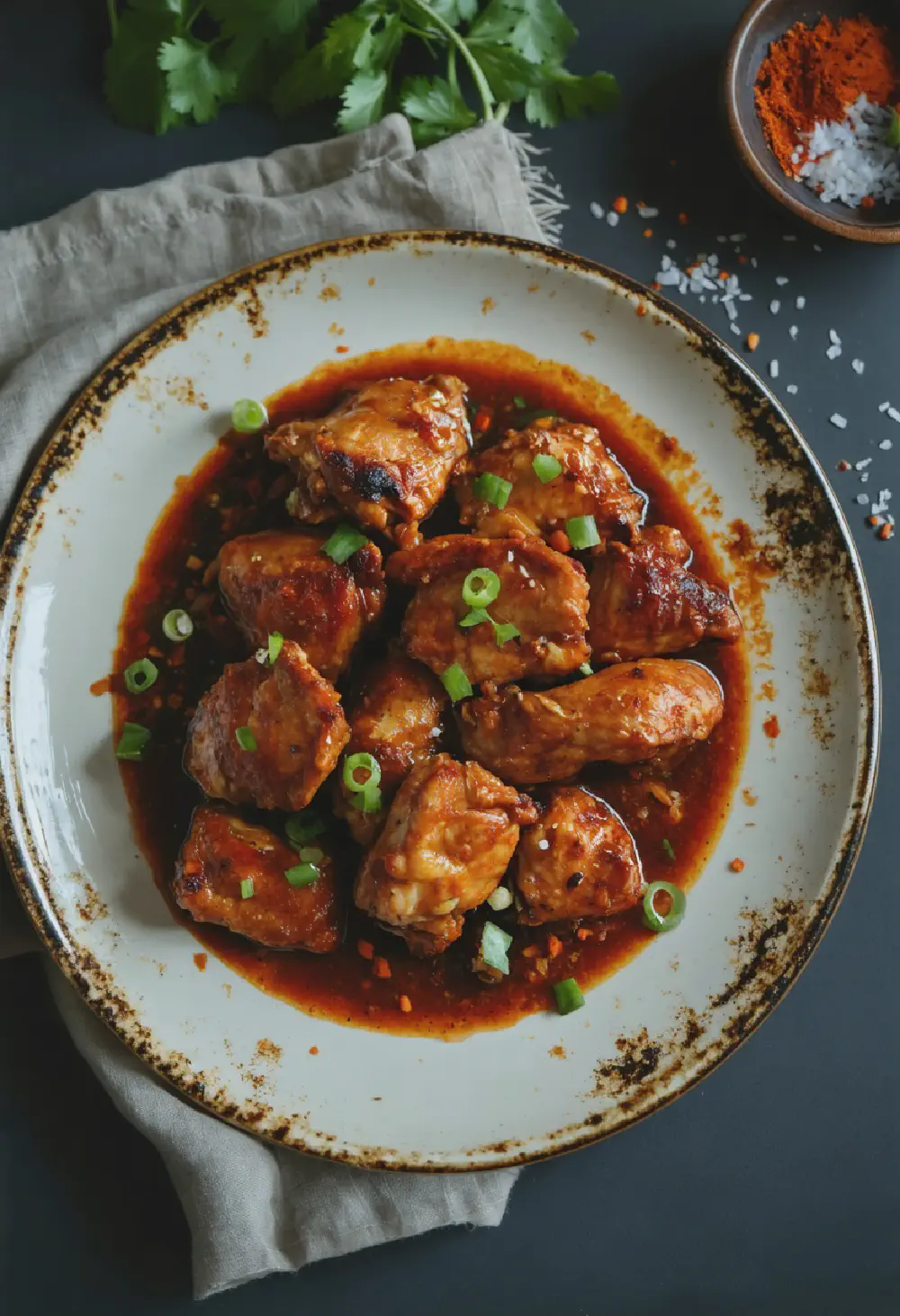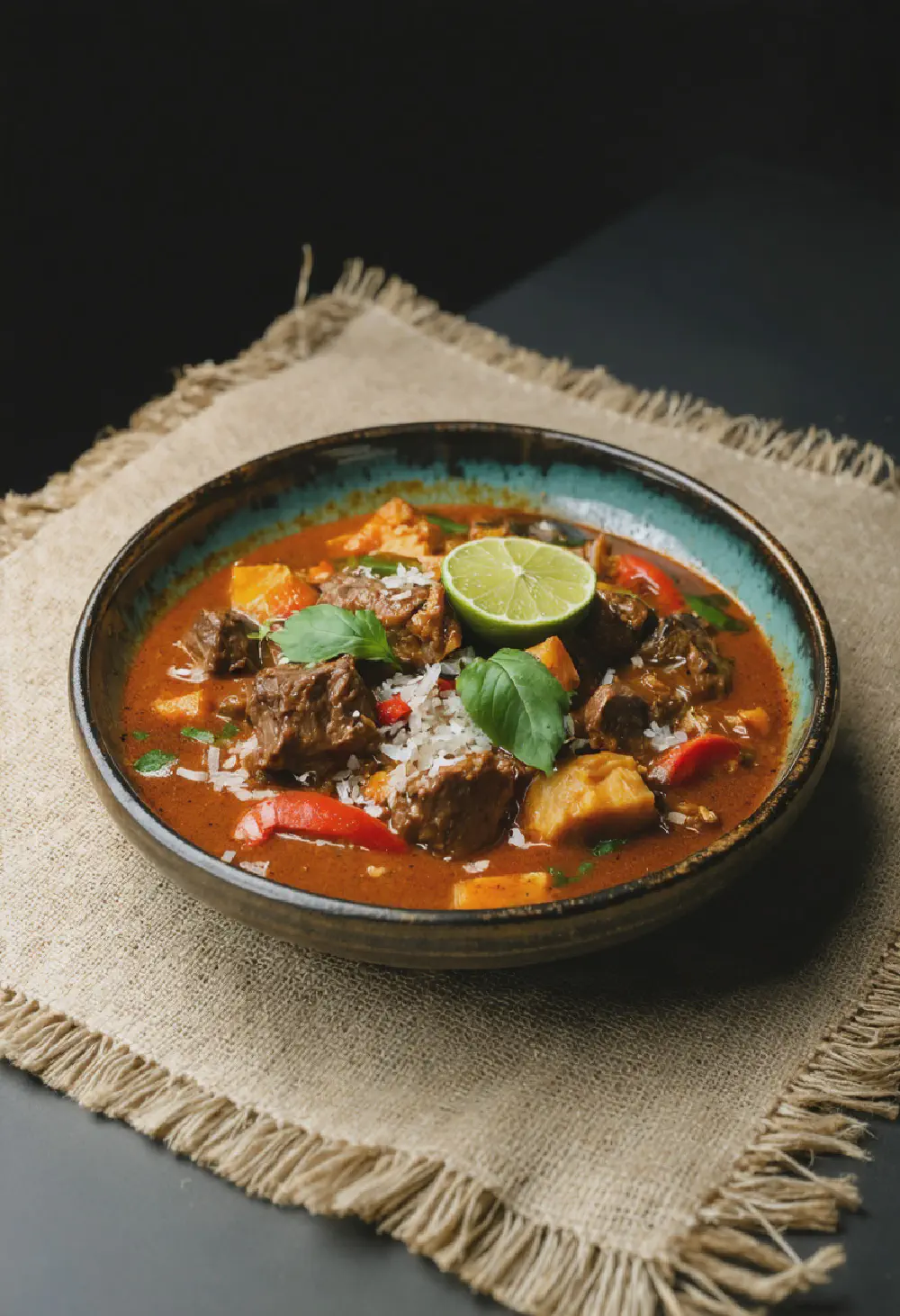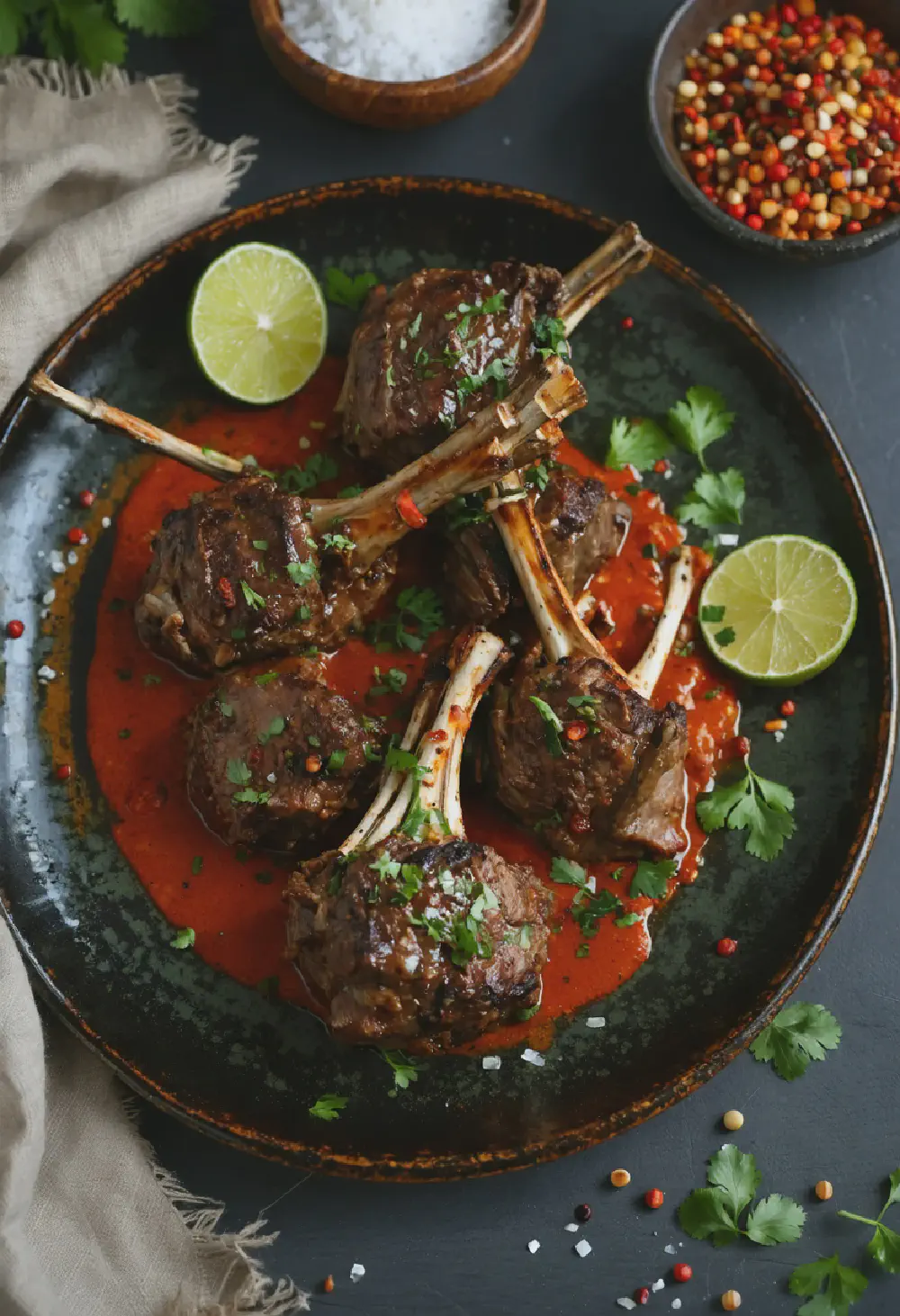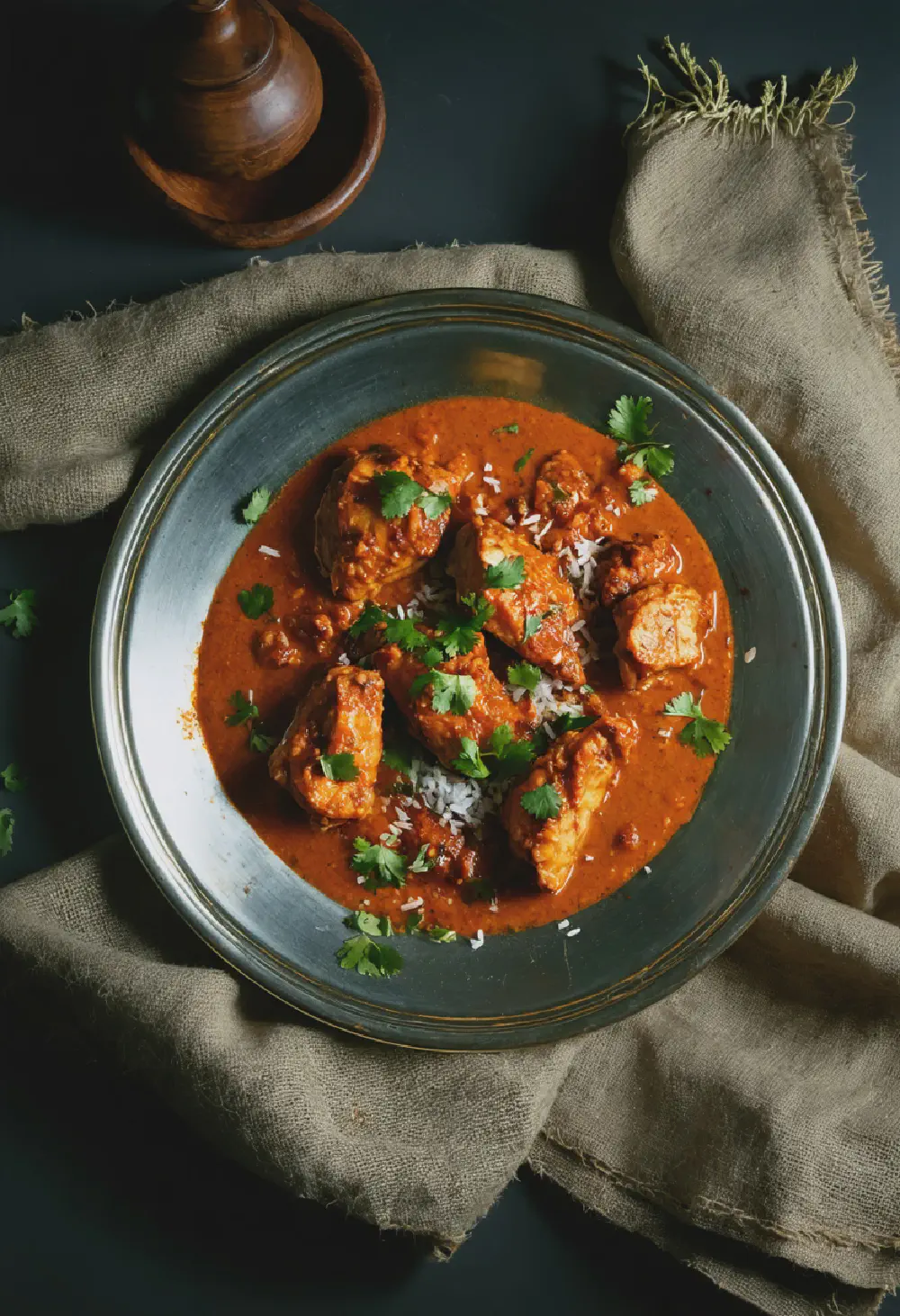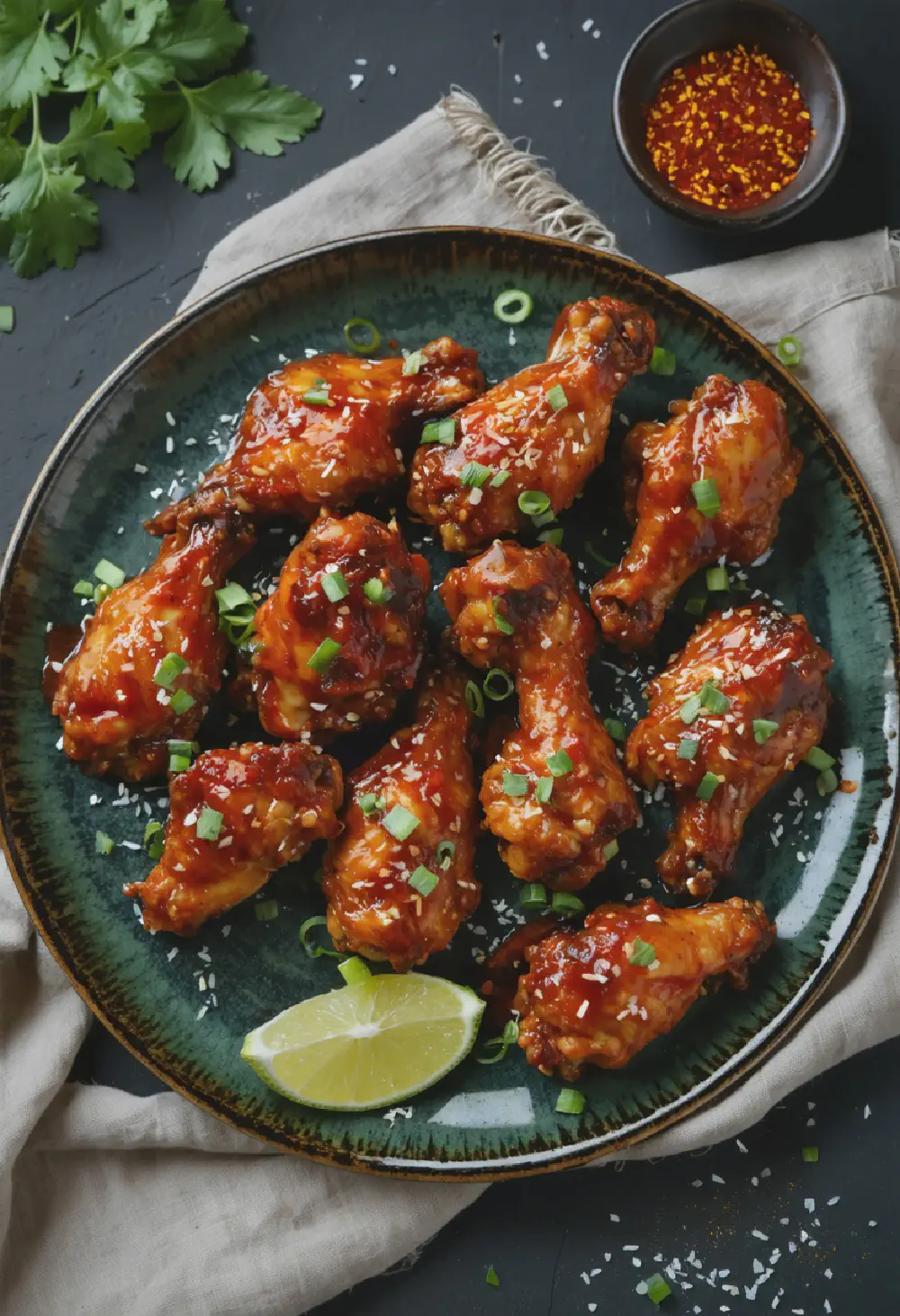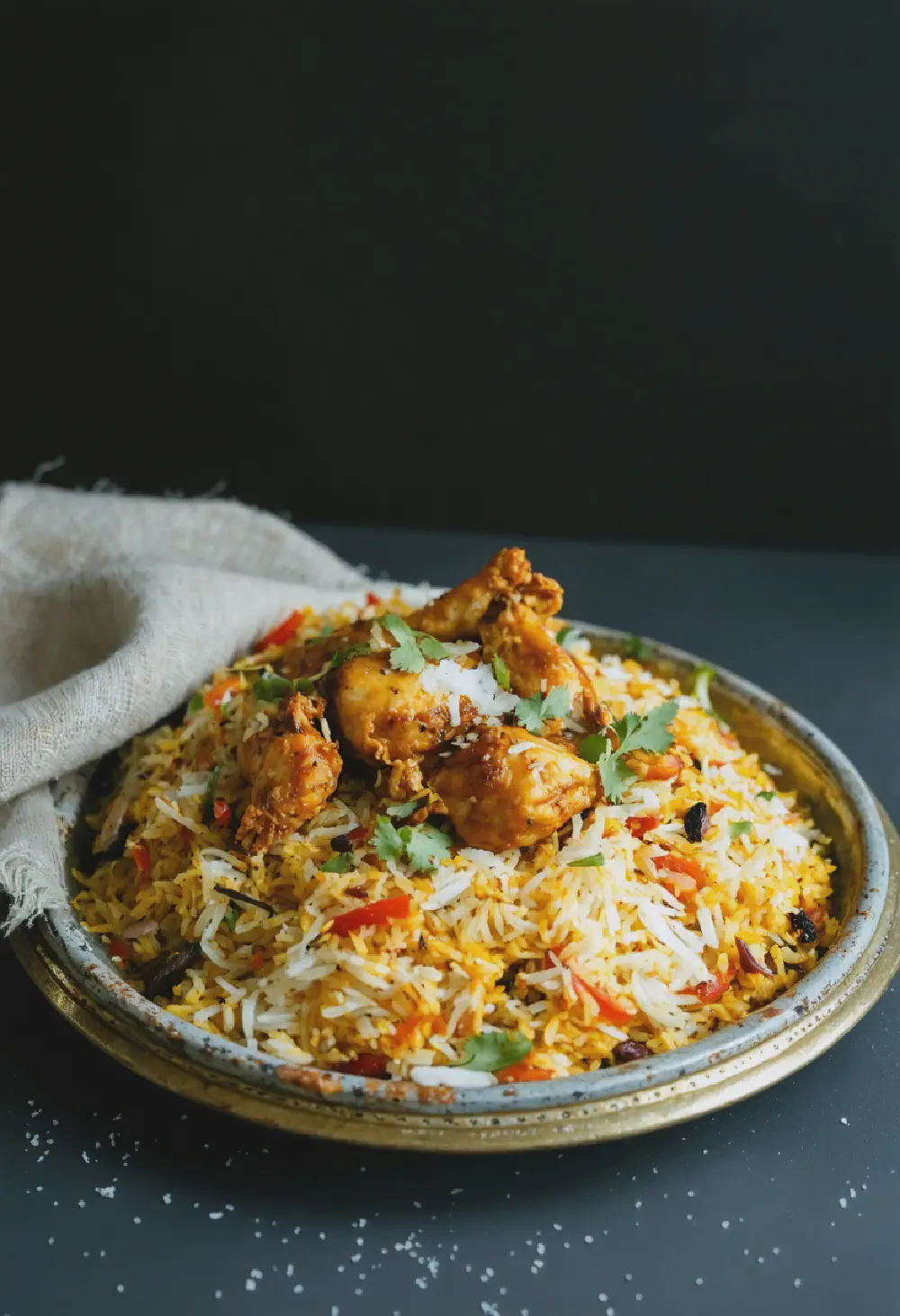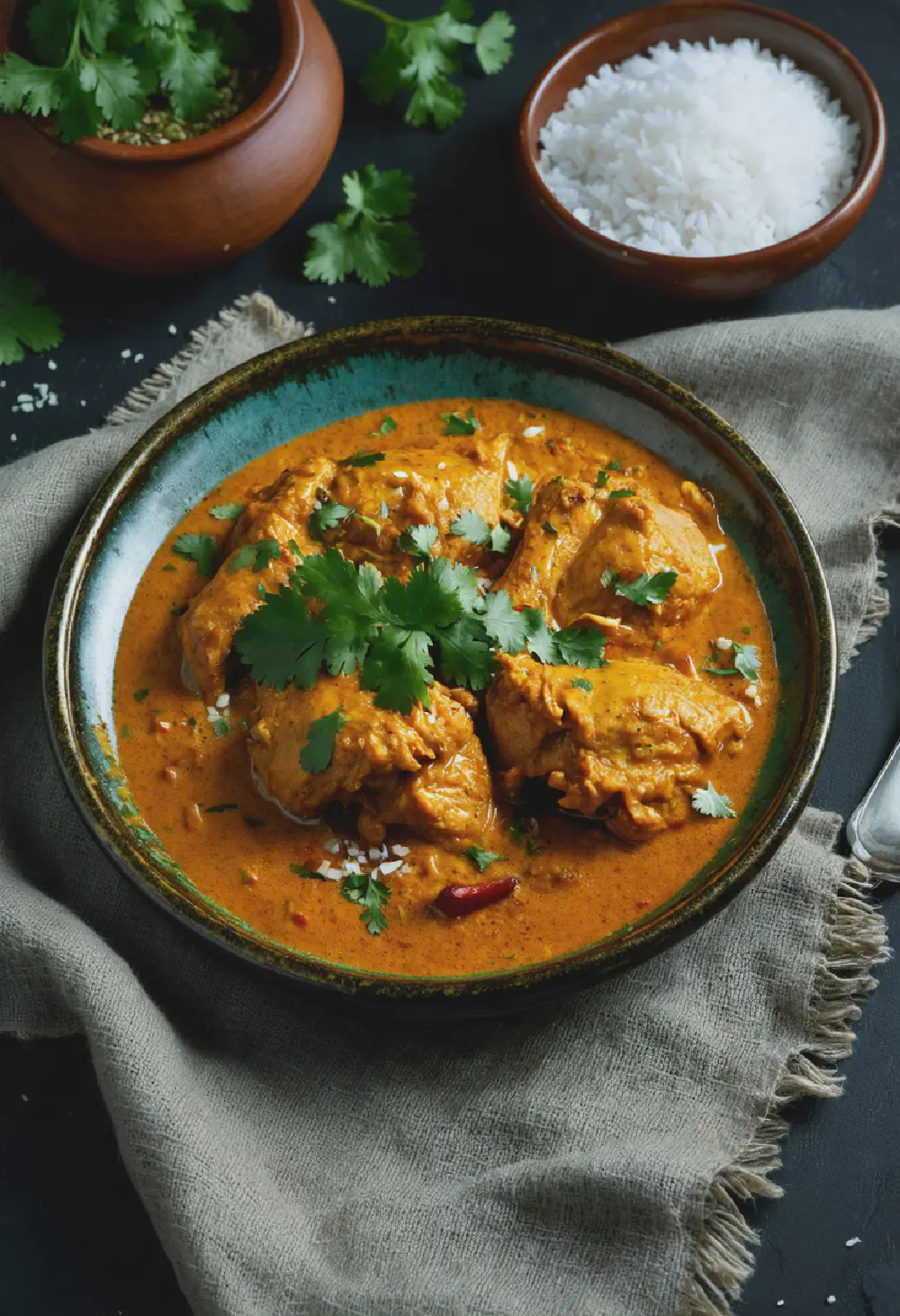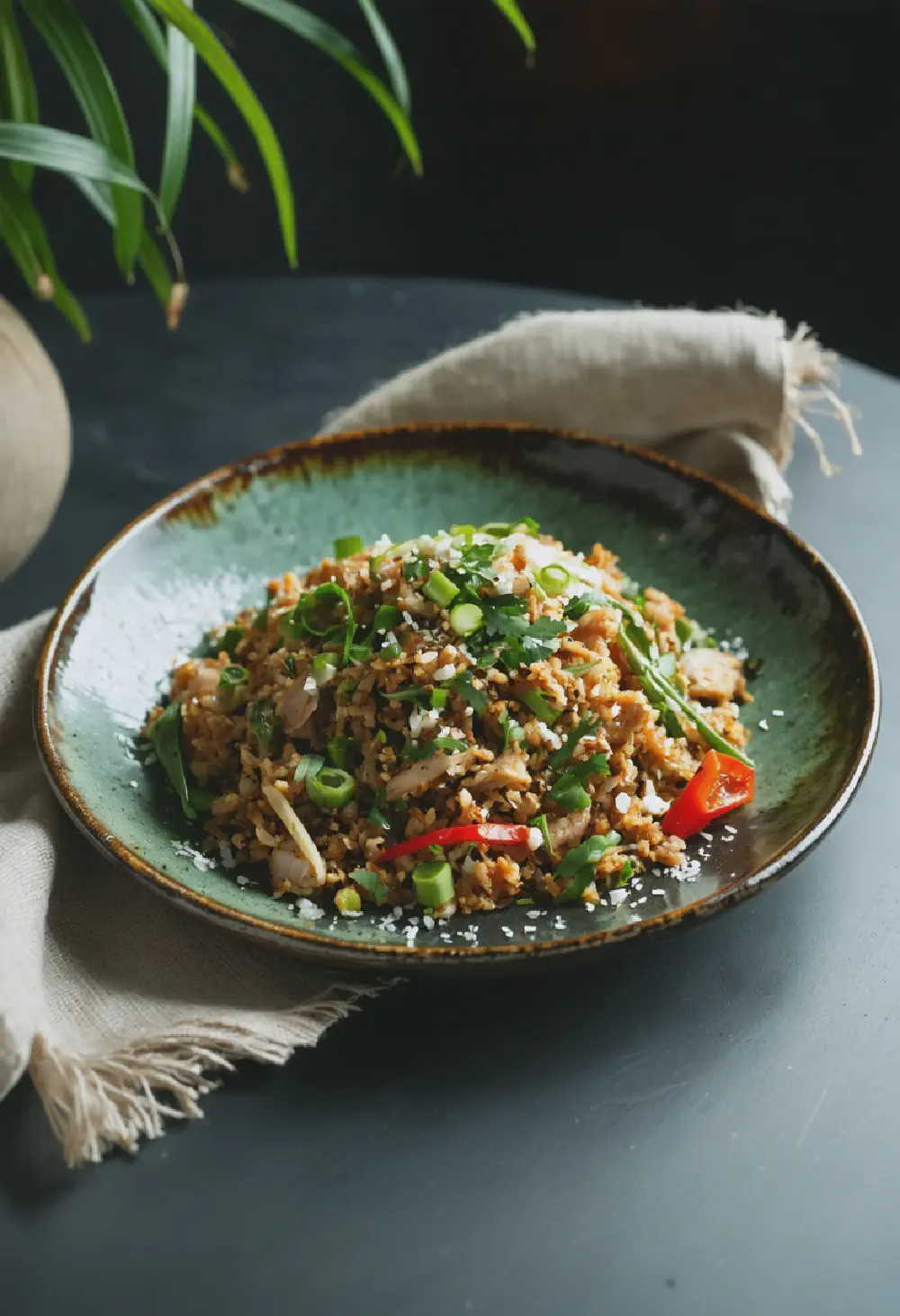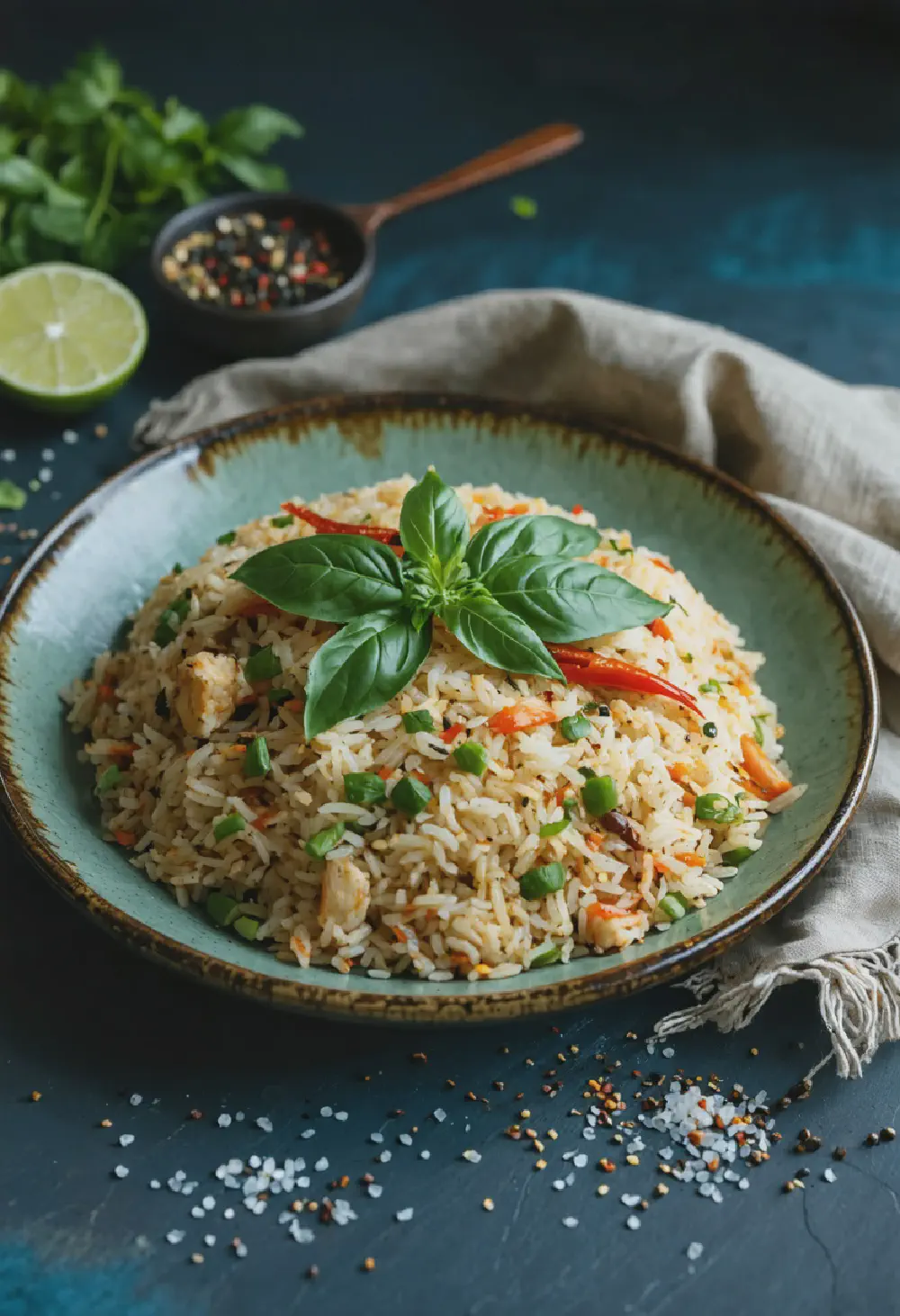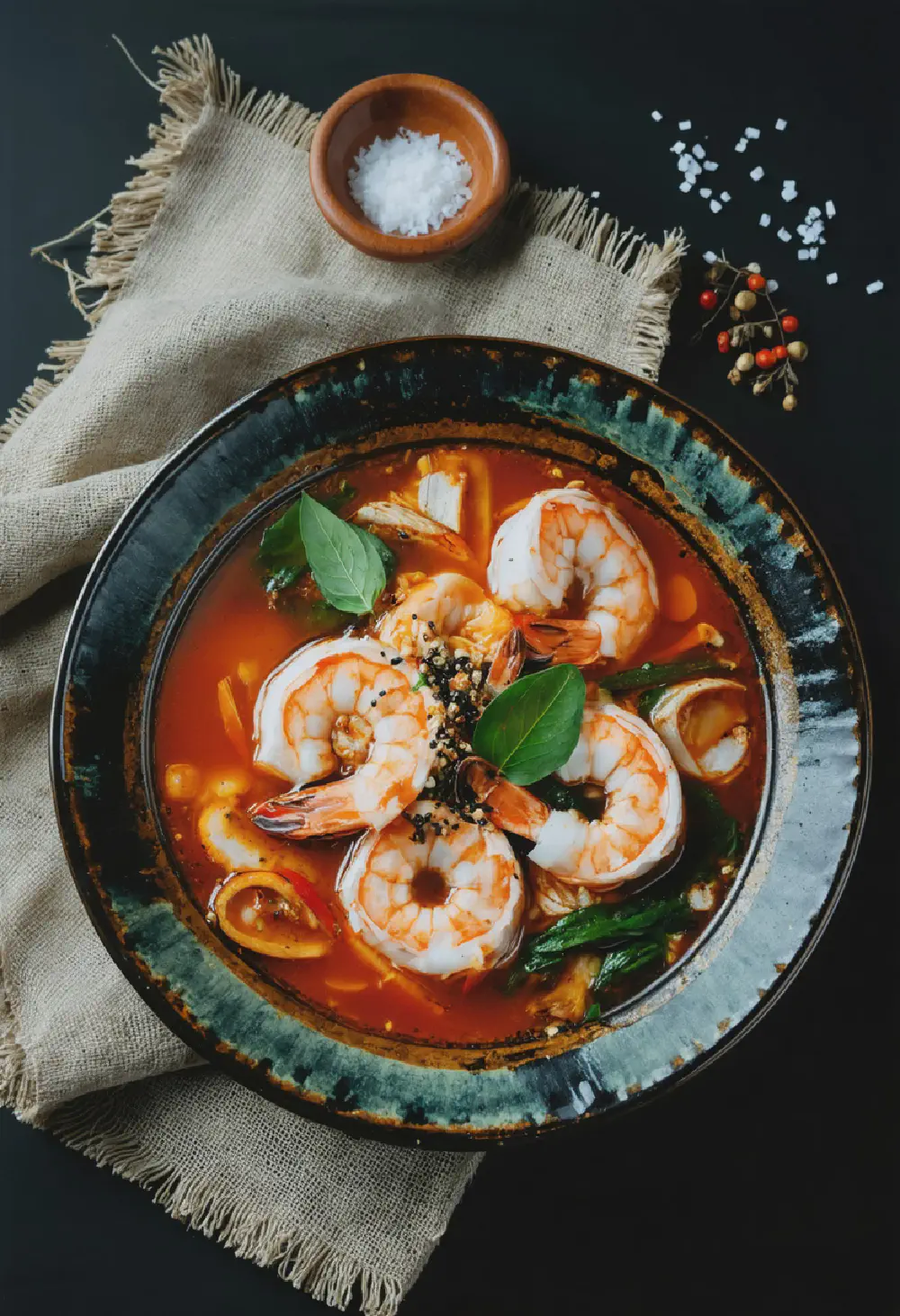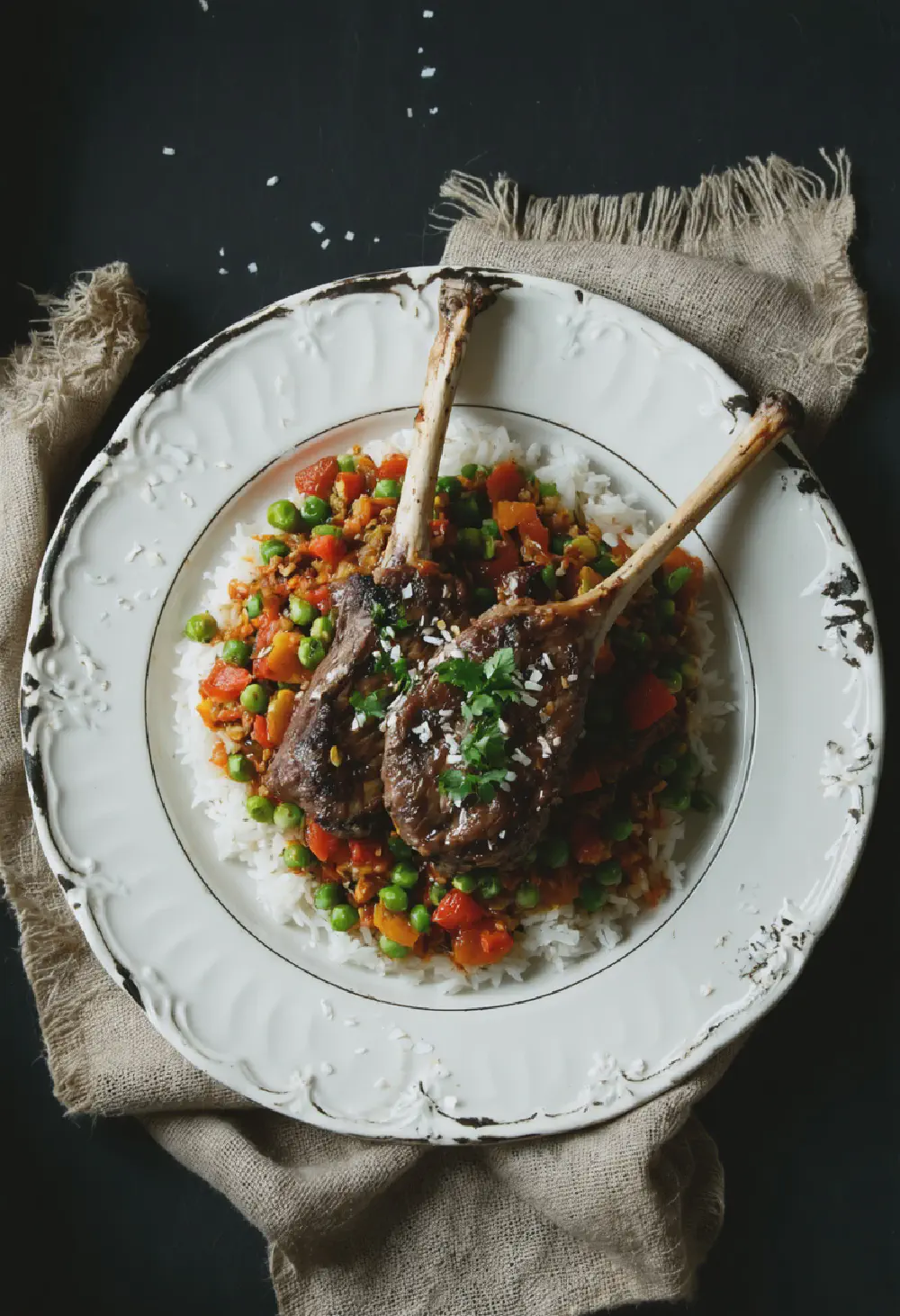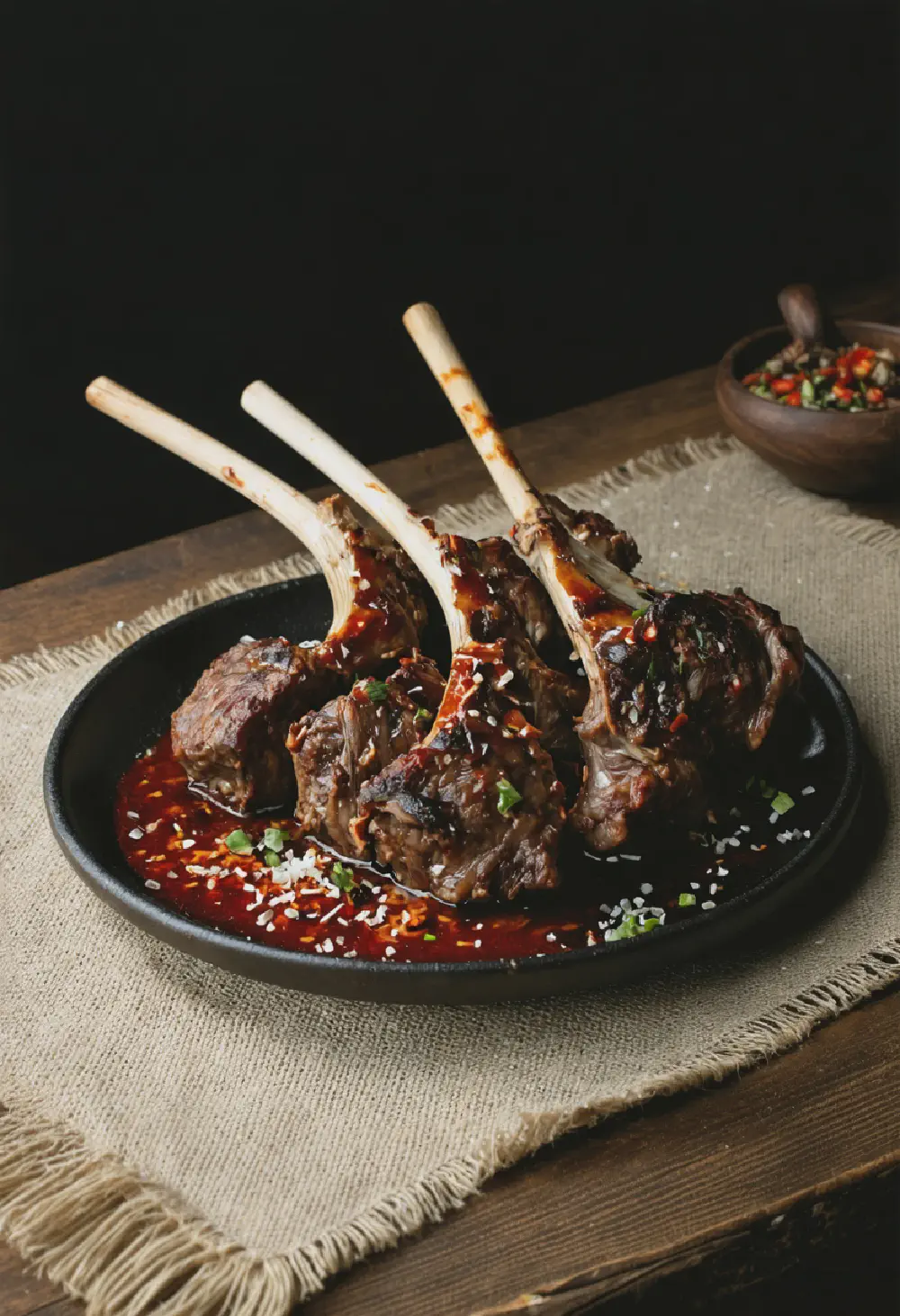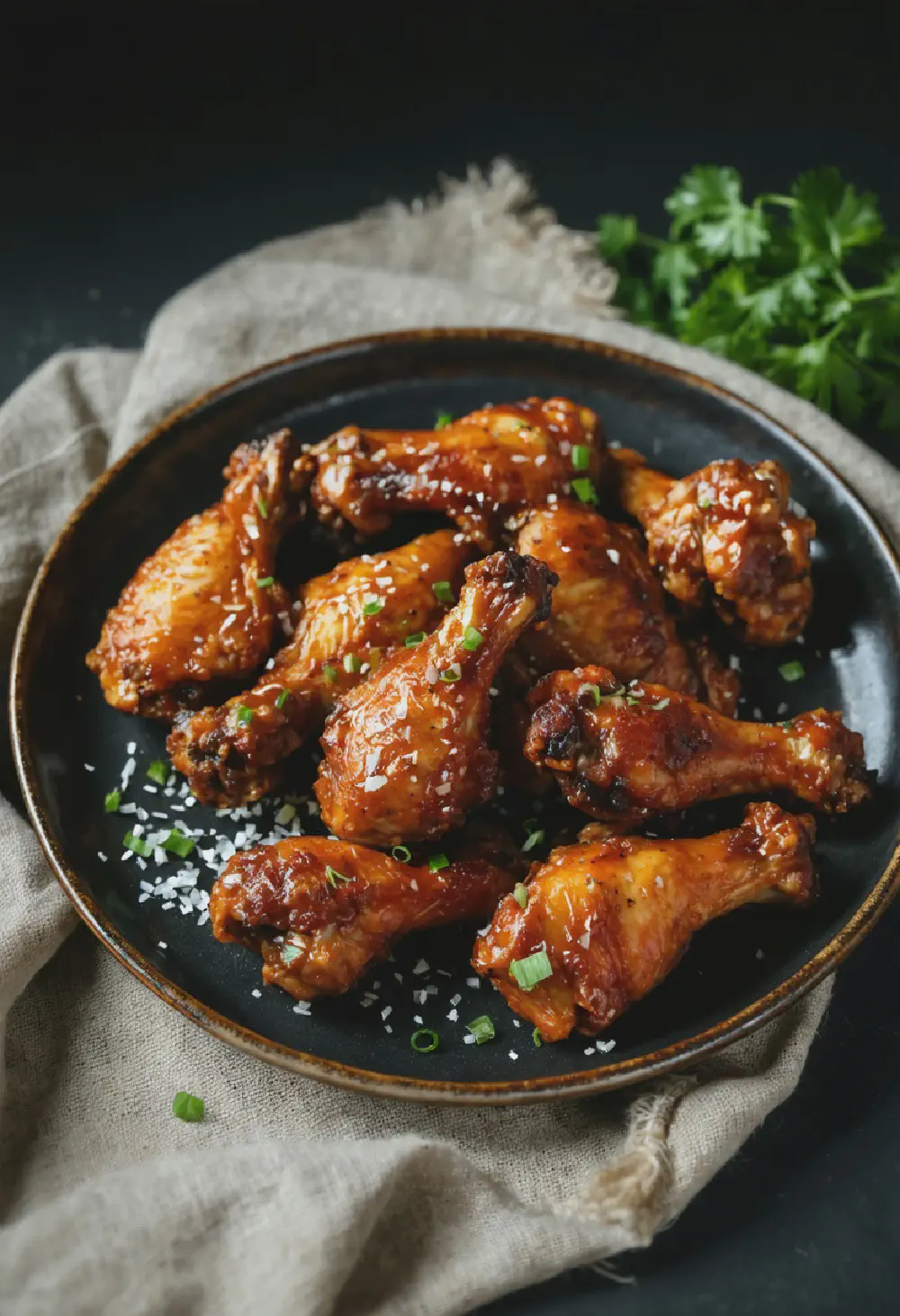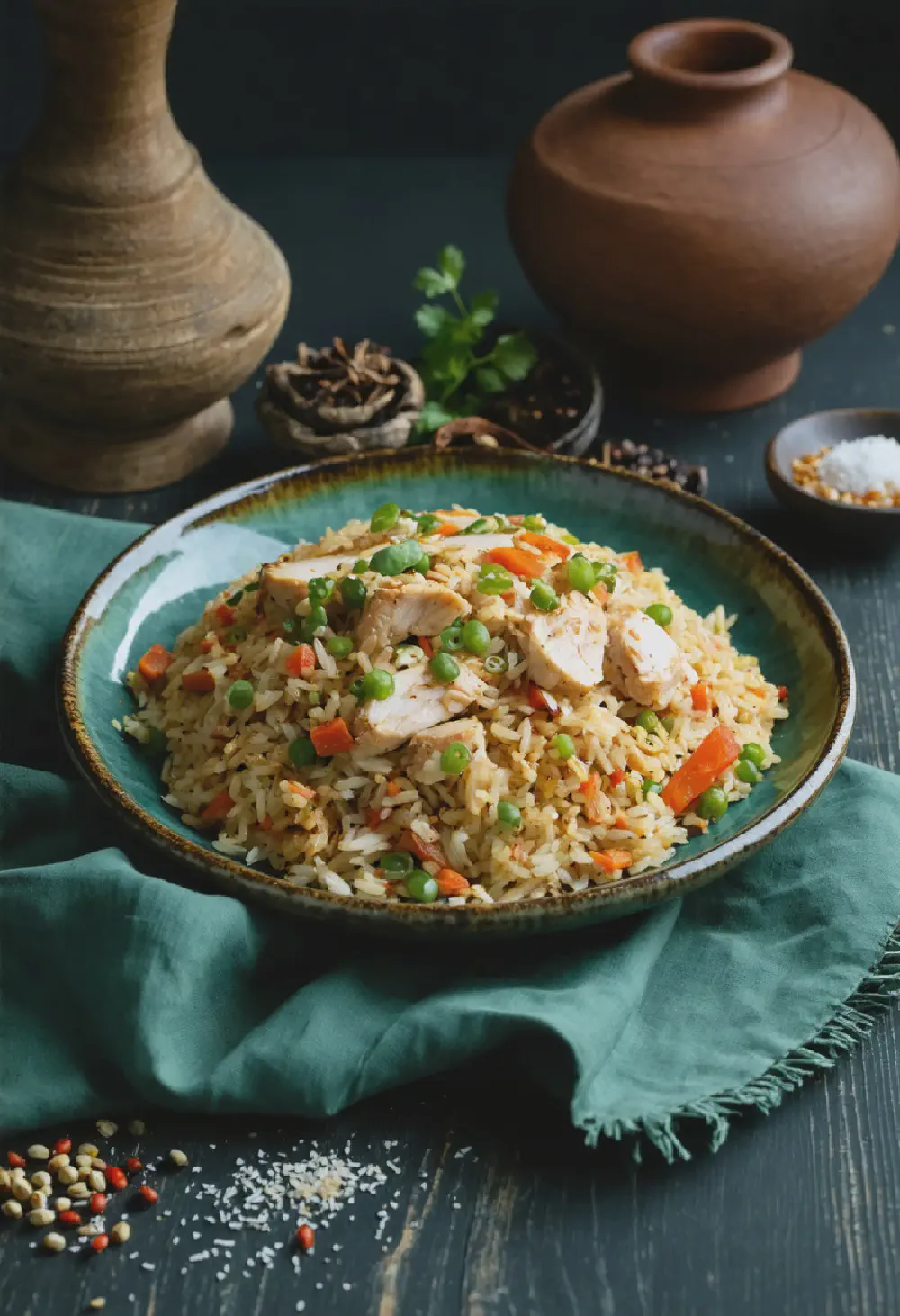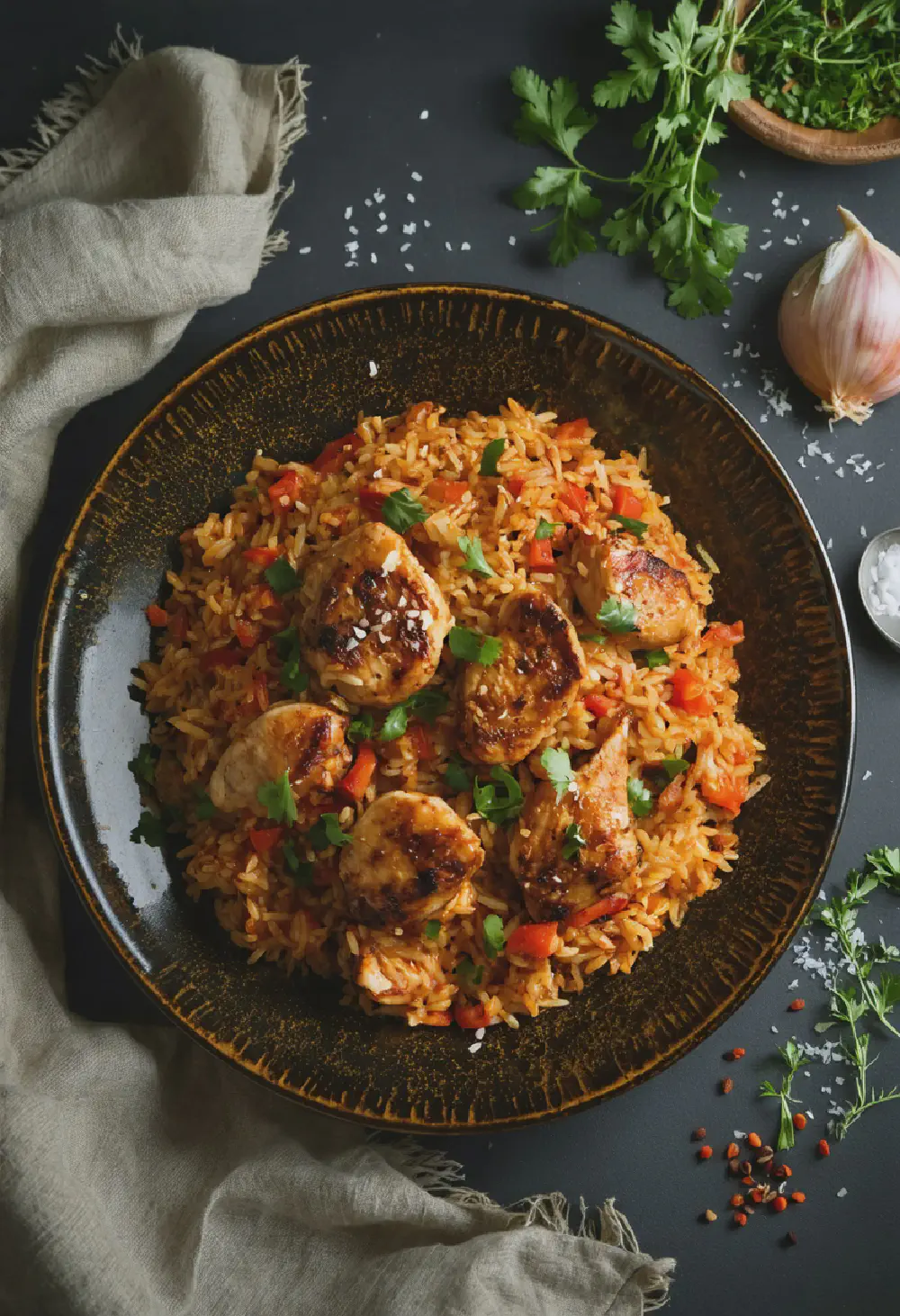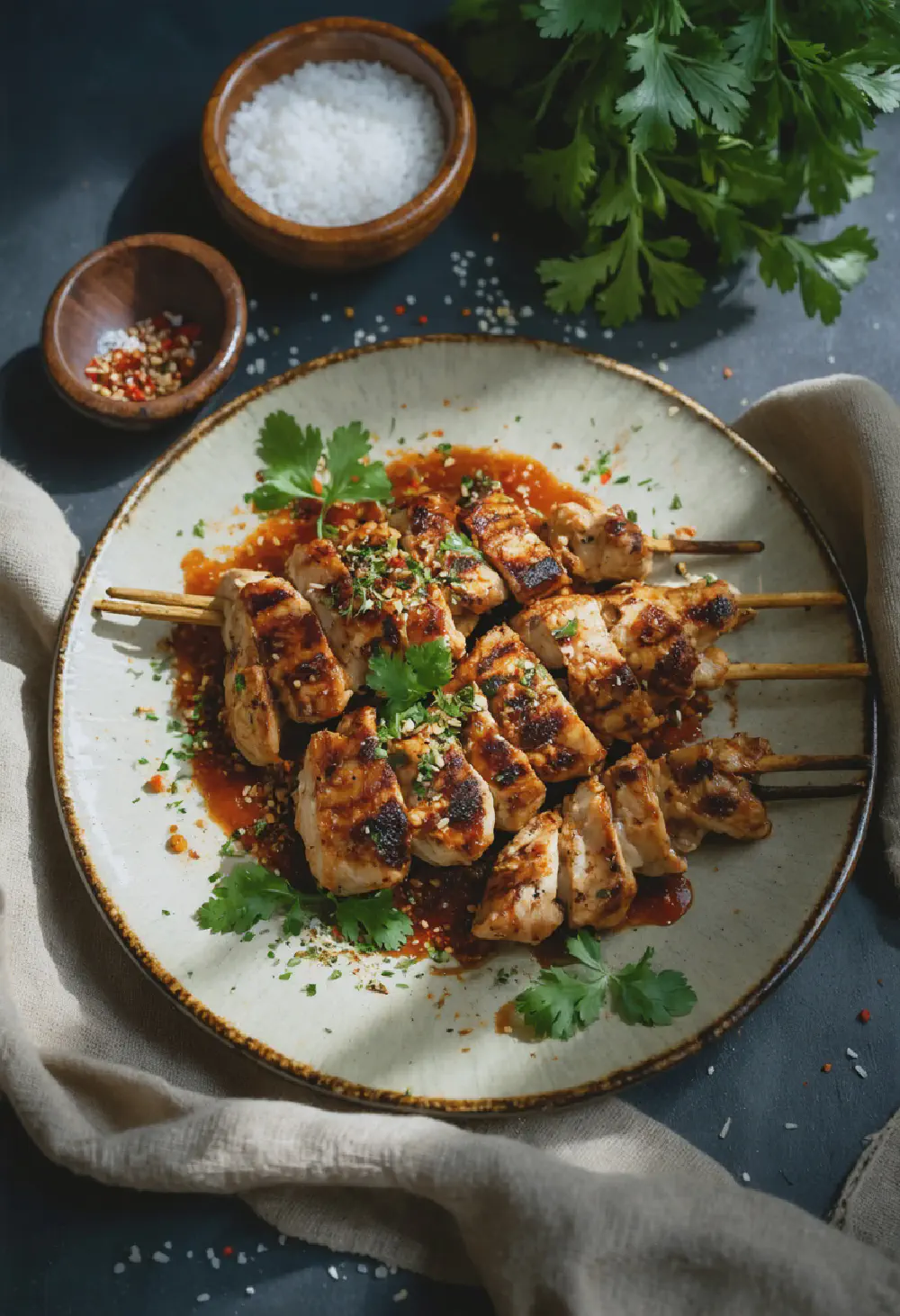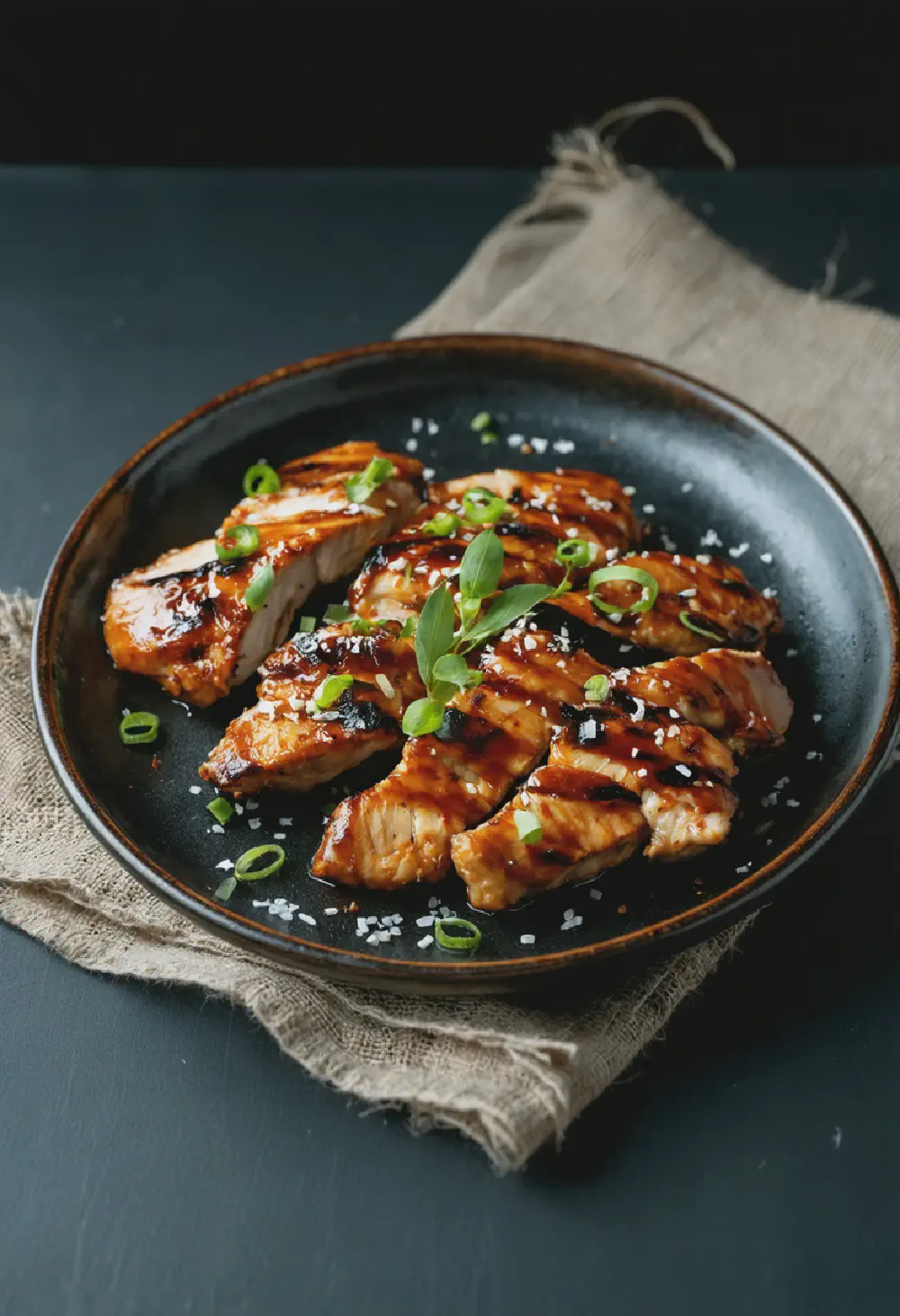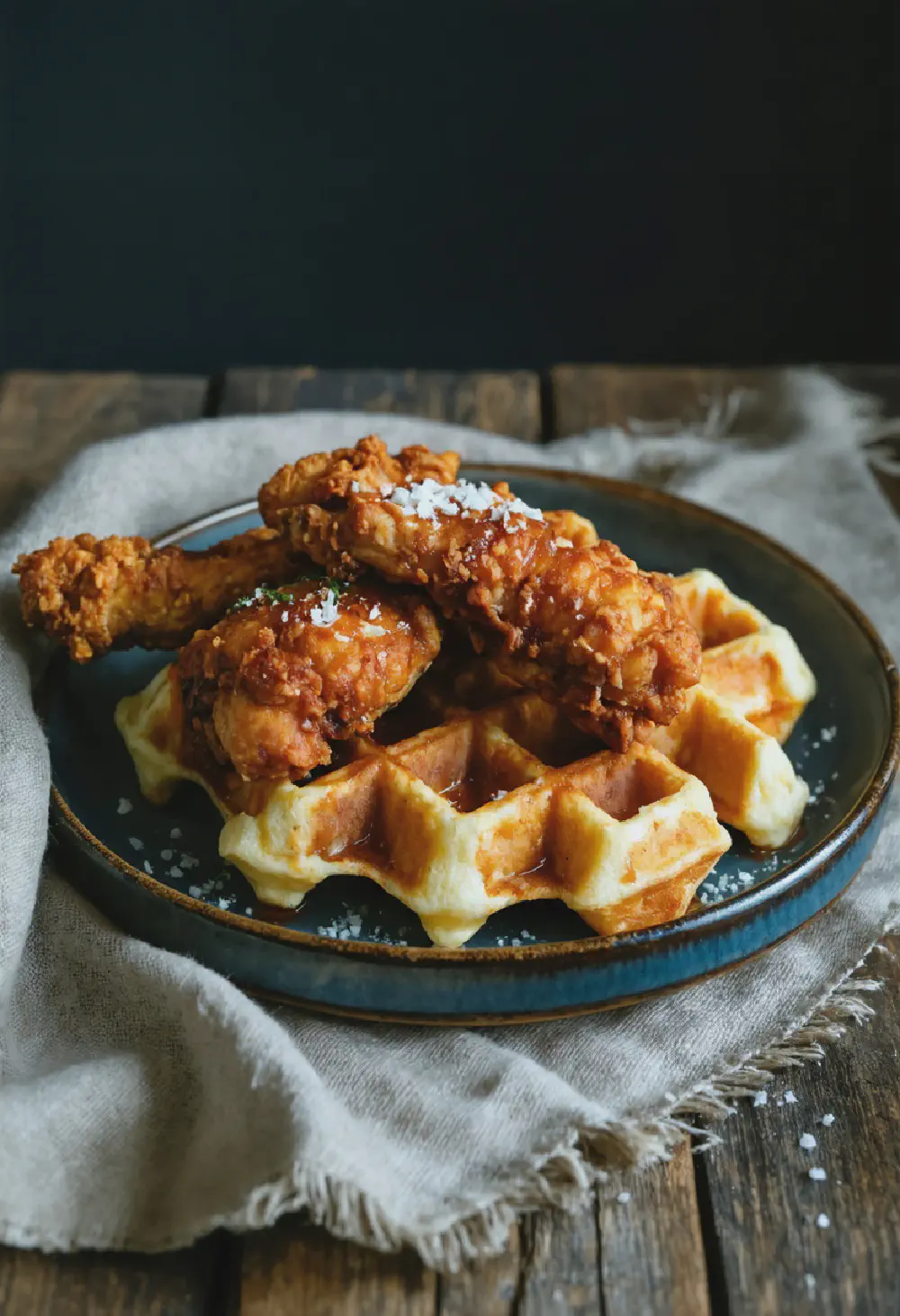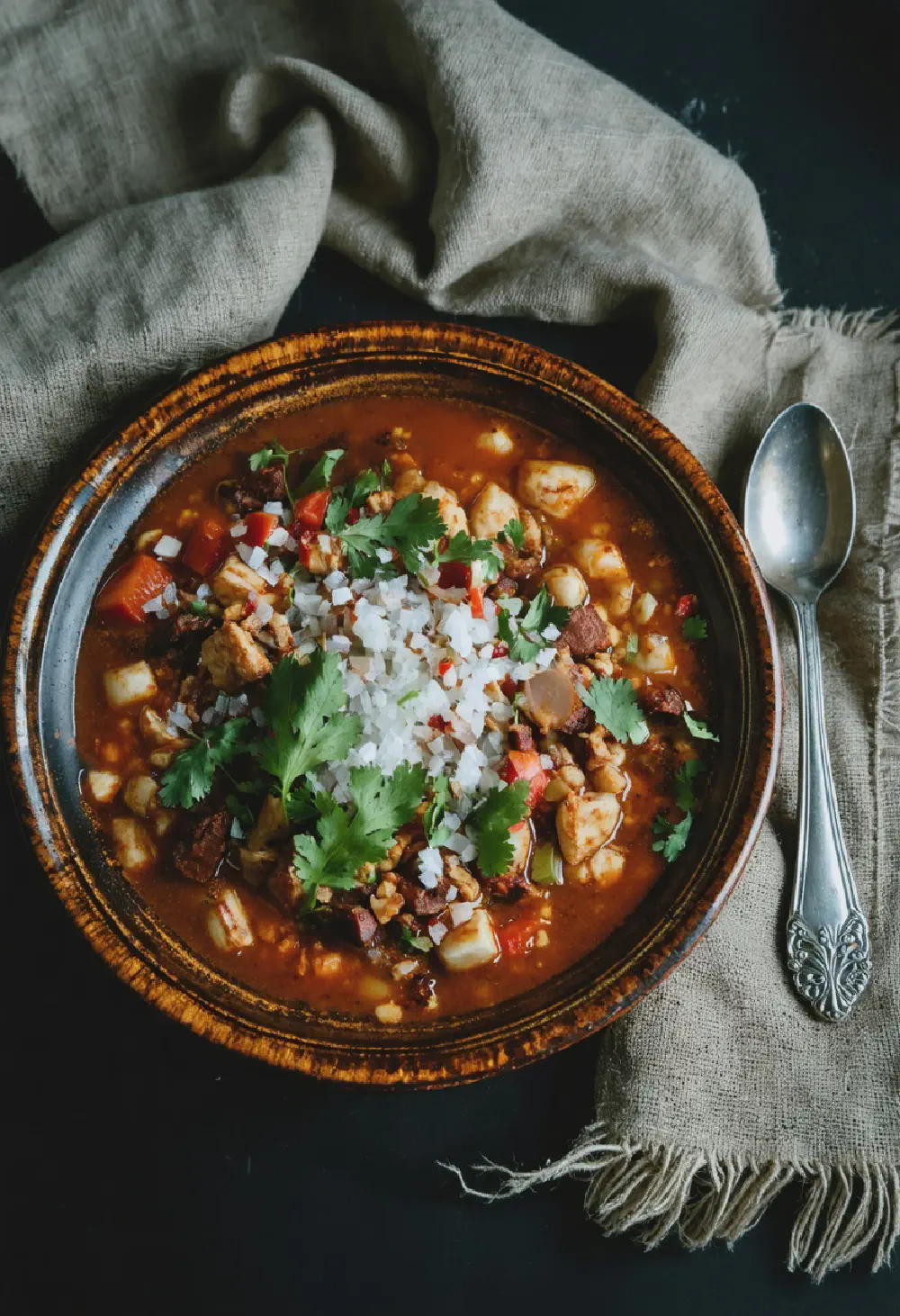Panang Chicken
15M
40M
- Makes 4
- 1 lb (450g) boneless chicken thighs, cut into bite-sized pieces
- 2 tablespoons Panang curry paste
- 1 can (13.5 oz) coconut milk
- 1 tablespoon fish sauce
- 1 tablespoon palm sugar or brown sugar
- 1 red bell pepper, sliced
- 1/2 cup Thai basil leaves
- 2 kaffir lime leaves, torn
- 1 tablespoon vegetable oil
- Cooked jasmine rice, for serving
- Heat the vegetable oil in a large skillet or wok over medium heat. Add the Panang curry paste and cook, stirring constantly, for about 2 minutes until fragrant.
- Pour in half of the coconut milk and stir to combine with the curry paste. Cook for another 2-3 minutes until the oil starts to separate from the coconut milk.
- Add the chicken pieces to the skillet and stir to coat them with the curry mixture. Cook for about 5 minutes until the chicken is partially cooked.
- Add the remaining coconut milk, fish sauce, and palm sugar. Stir well and bring the mixture to a simmer.
- Add the sliced red bell pepper, kaffir lime leaves, and continue to simmer for another 10-15 minutes until the chicken is fully cooked and the sauce has thickened.
- Stir in the Thai basil leaves and remove the skillet from heat.
- Serve the Panang Chicken hot over jasmine rice.
Panang Chicken: A Deep Dive into Thai Culinary Delight
History of Panang Chicken
Panang Chicken, known as “Gaeng Panang Gai” in Thailand, is a dish that has its roots deeply embedded in the rich tapestry of Thai cuisine. Originating from the central plains of Thailand, Panang curry is believed to have been influenced by the Malaysian and Indonesian cuisines due to historical trade routes. The name “Panang” is thought to be derived from the Malaysian island of Penang, reflecting the dish’s cross-cultural heritage. Over the years, Panang Chicken has evolved, with each region in Thailand adding its unique twist to the recipe, yet it remains a beloved staple in Thai households and restaurants worldwide.
Taste Profile of Panang Chicken
The taste profile of Panang Chicken is a harmonious blend of flavors that showcases the complexity of Thai cuisine. At its core, the dish is characterized by its creamy texture, derived from the rich coconut milk that balances the heat of the spicy Panang curry paste. The curry paste itself is a concoction of dried chili peppers, lemongrass, galangal, kaffir lime leaves, and other aromatic spices, contributing to the dish’s distinctive spicy and aromatic notes. A hint of sweetness, often from palm sugar, rounds out the flavors, making Panang Chicken a perfect example of the Thai principle of balancing sweet, spicy, sour, and salty elements in one dish.
Cultural Significance of Panang Chicken in Thai Cuisine
In Thai cuisine, Panang Chicken holds a special place not only for its delectable taste but also for its cultural significance. It is a dish that is often served during special occasions and family gatherings, symbolizing warmth and hospitality. The preparation of Panang Chicken is a ritual in itself, with the careful blending of spices and the slow simmering of the curry, reflecting the Thai value of patience and attention to detail in cooking. Moreover, the dish’s adaptability to various proteins and vegetables showcases the Thai culinary philosophy of flexibility and creativity. Panang Chicken, therefore, is not just a meal but a celebration of Thai culture and culinary artistry.
